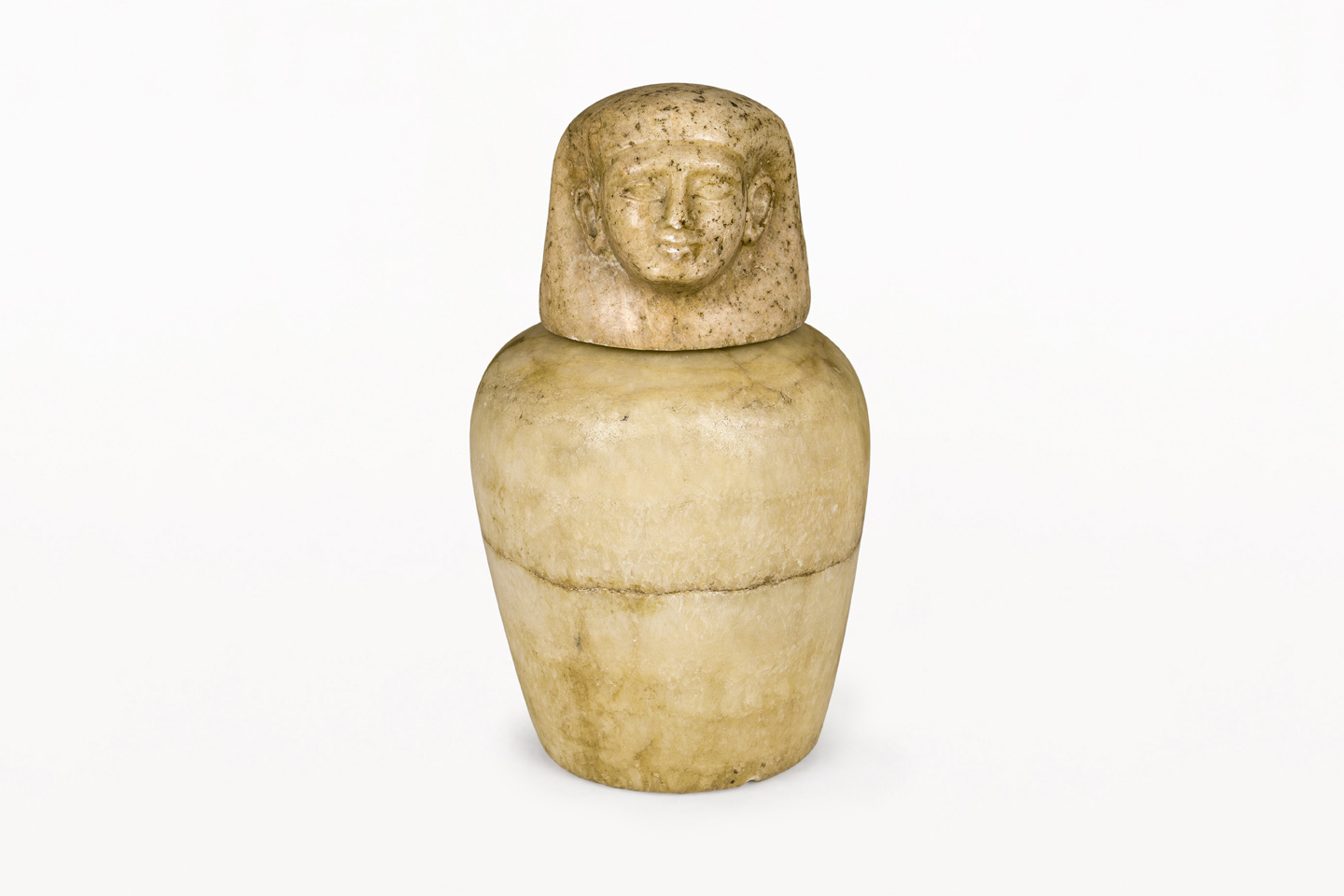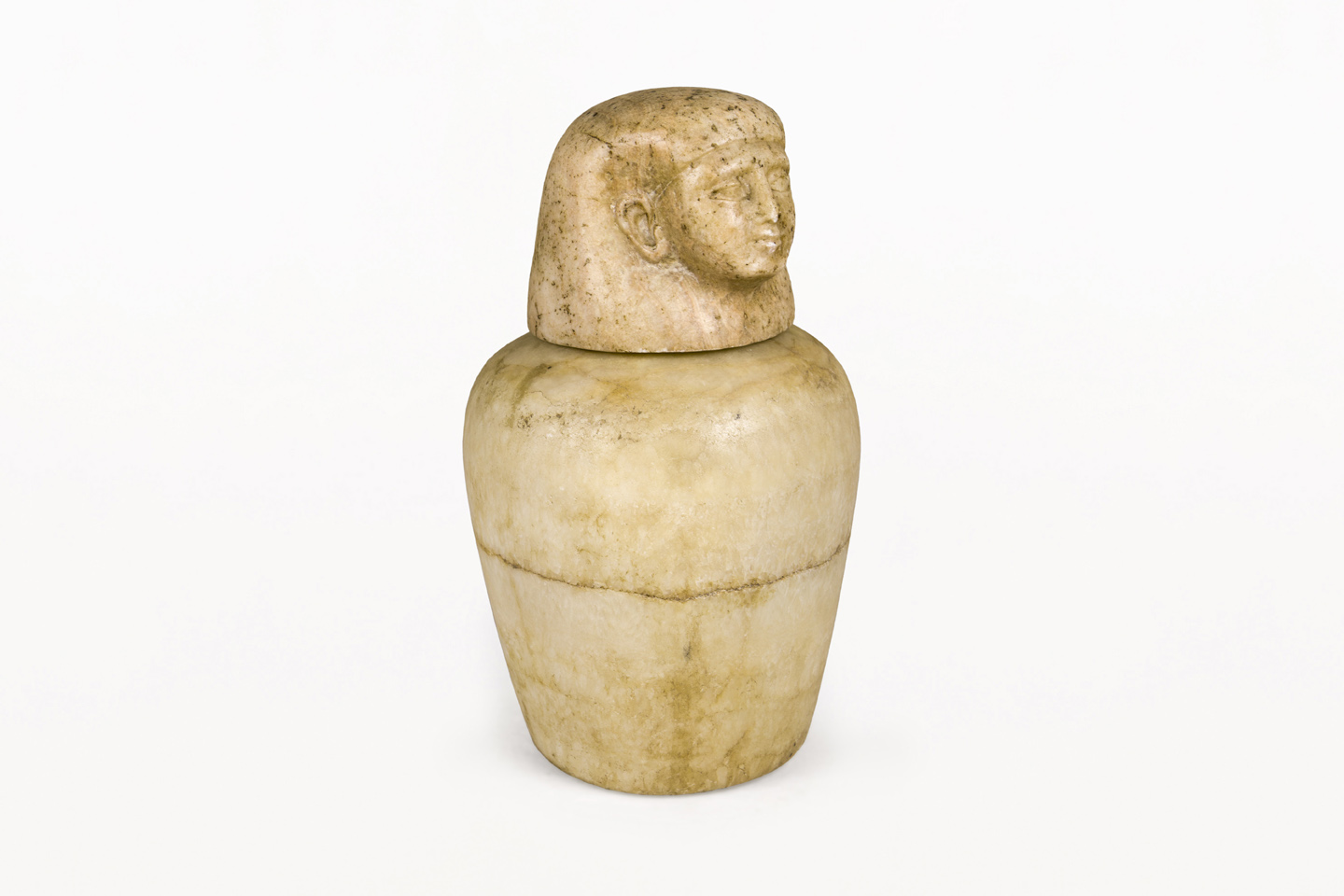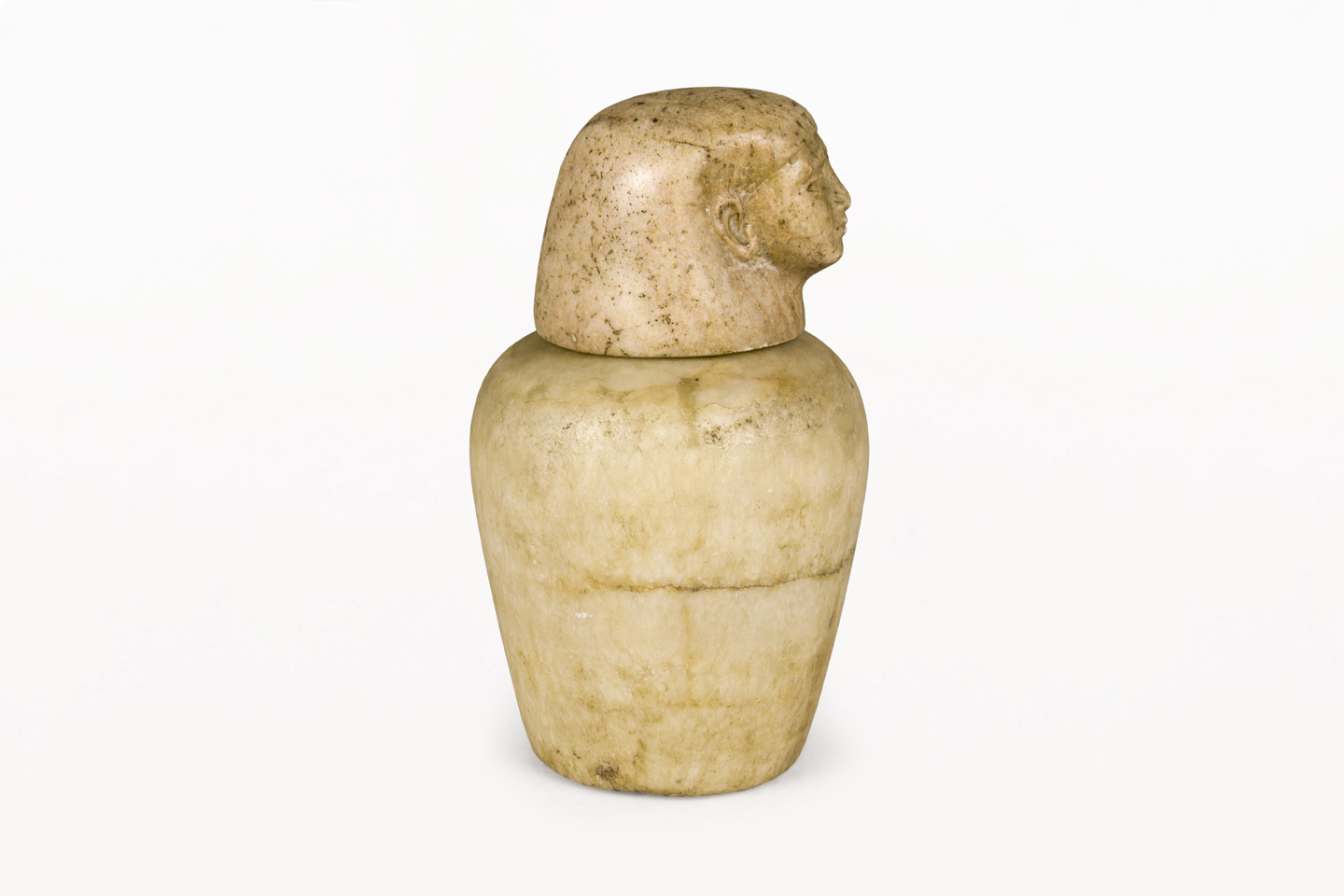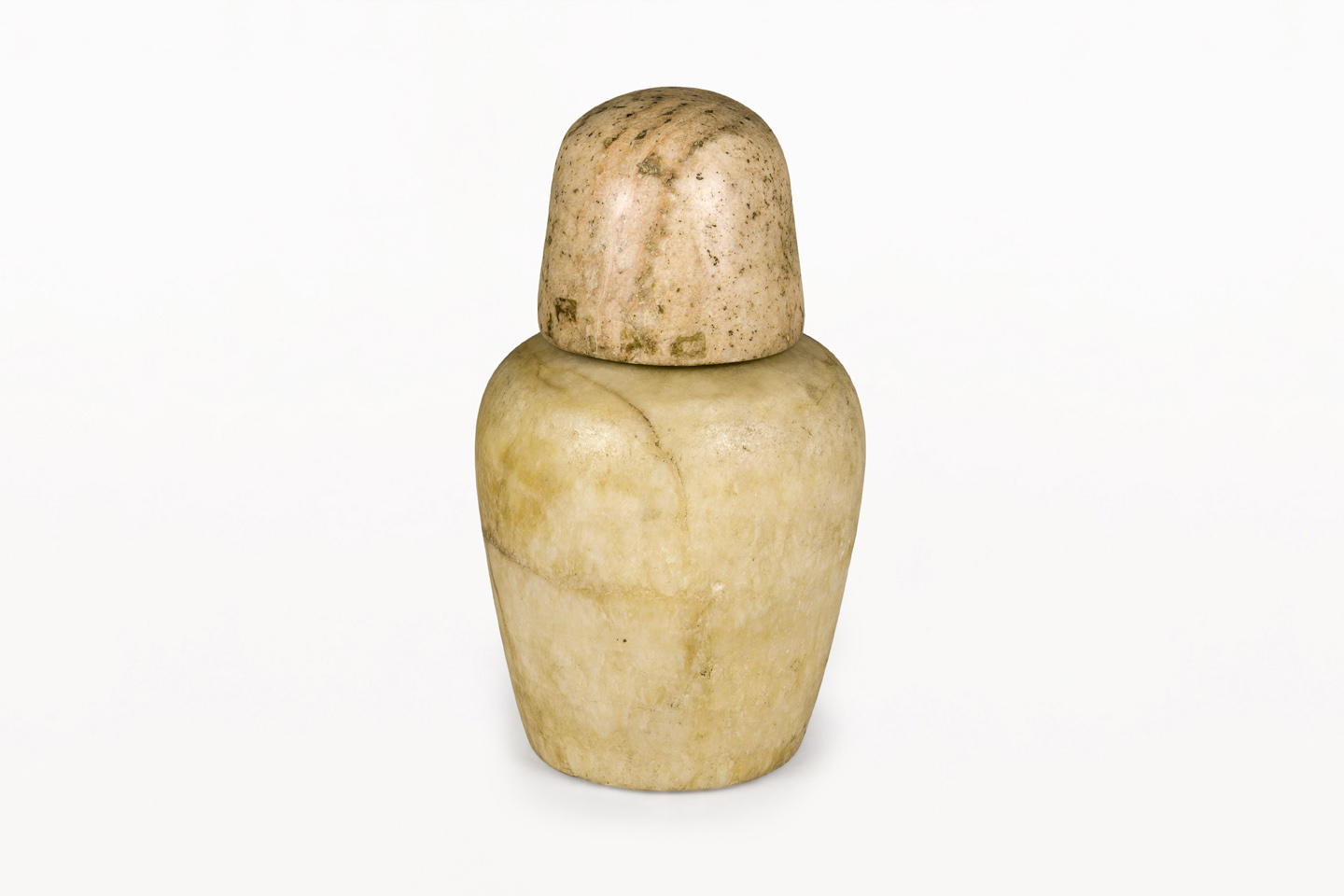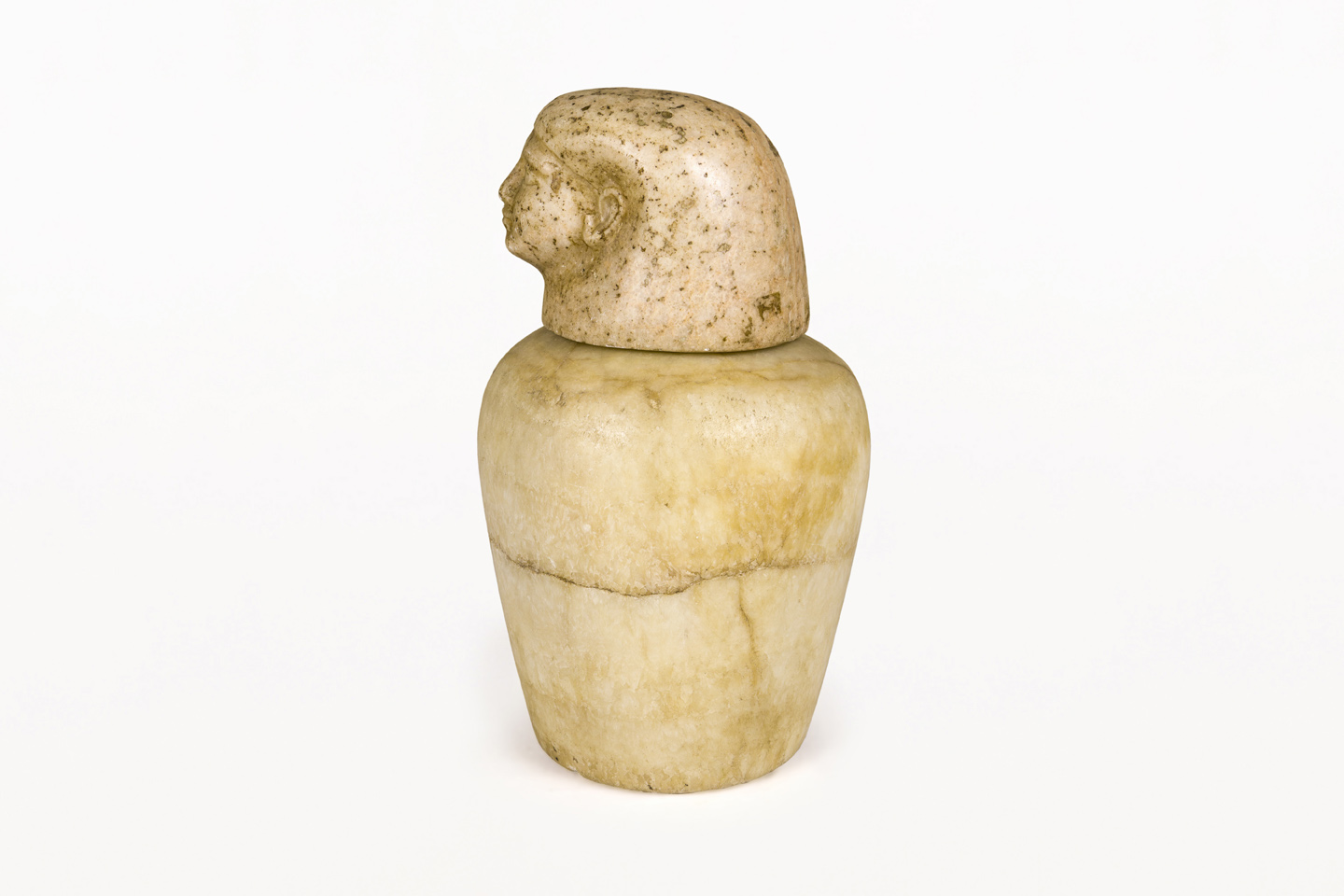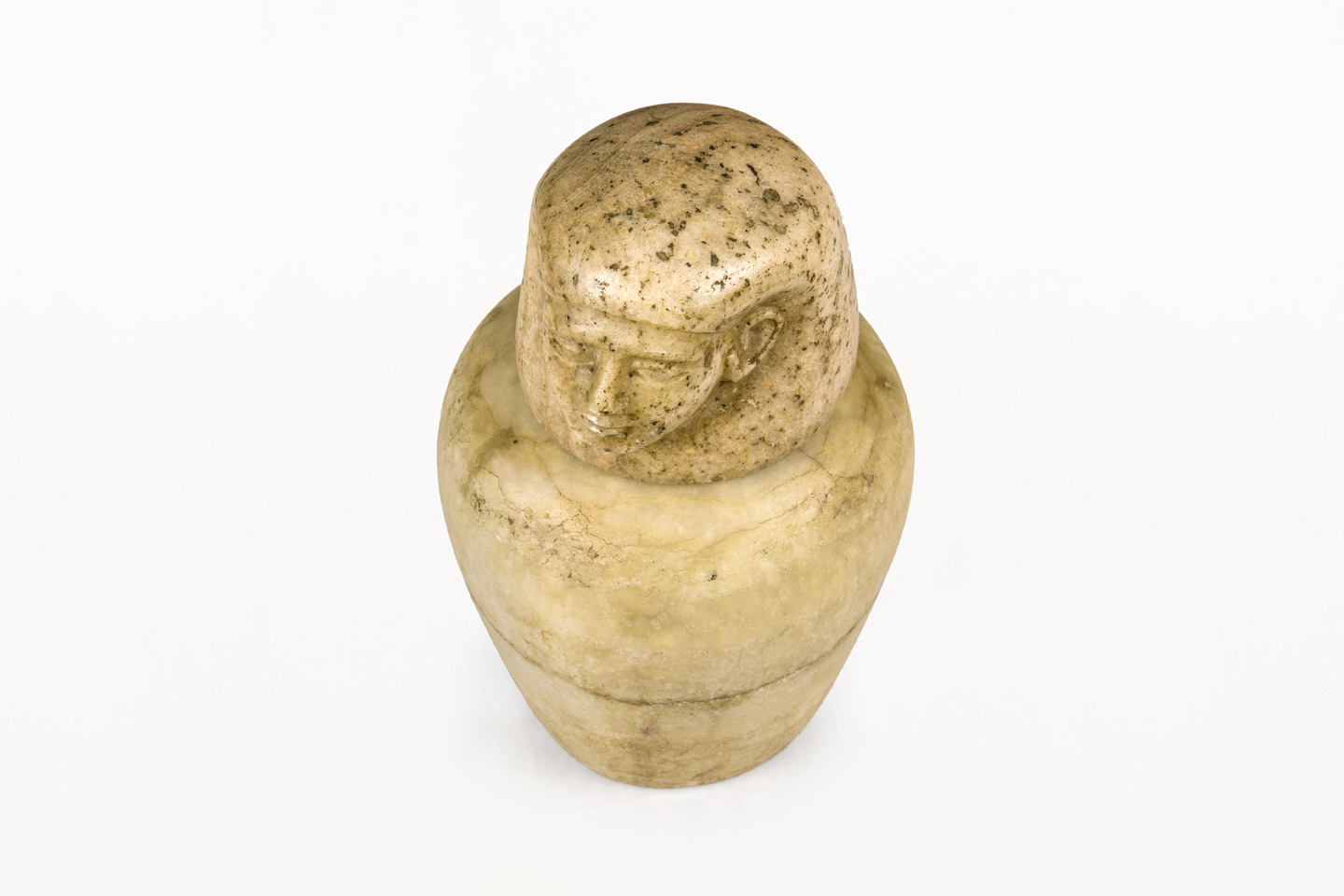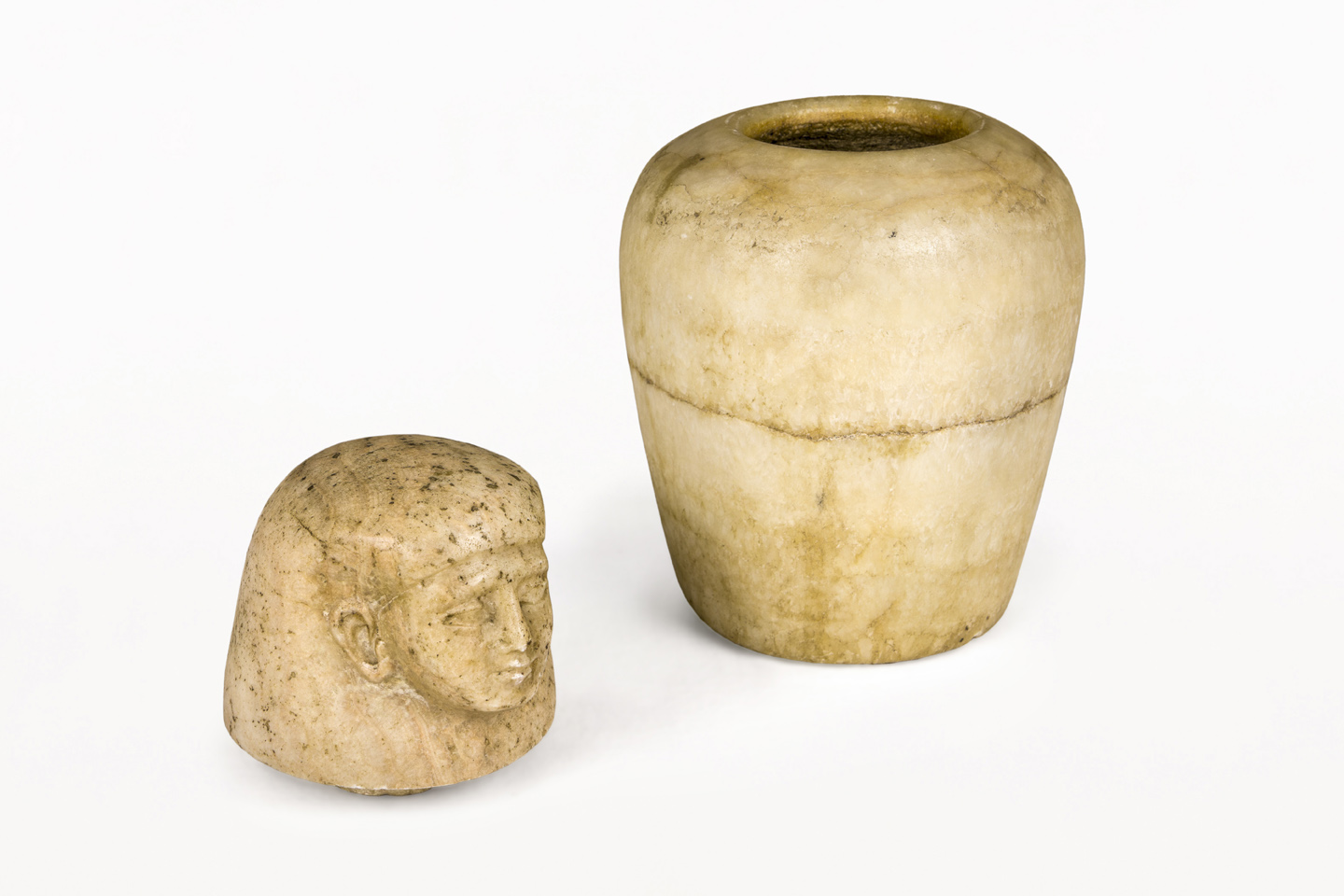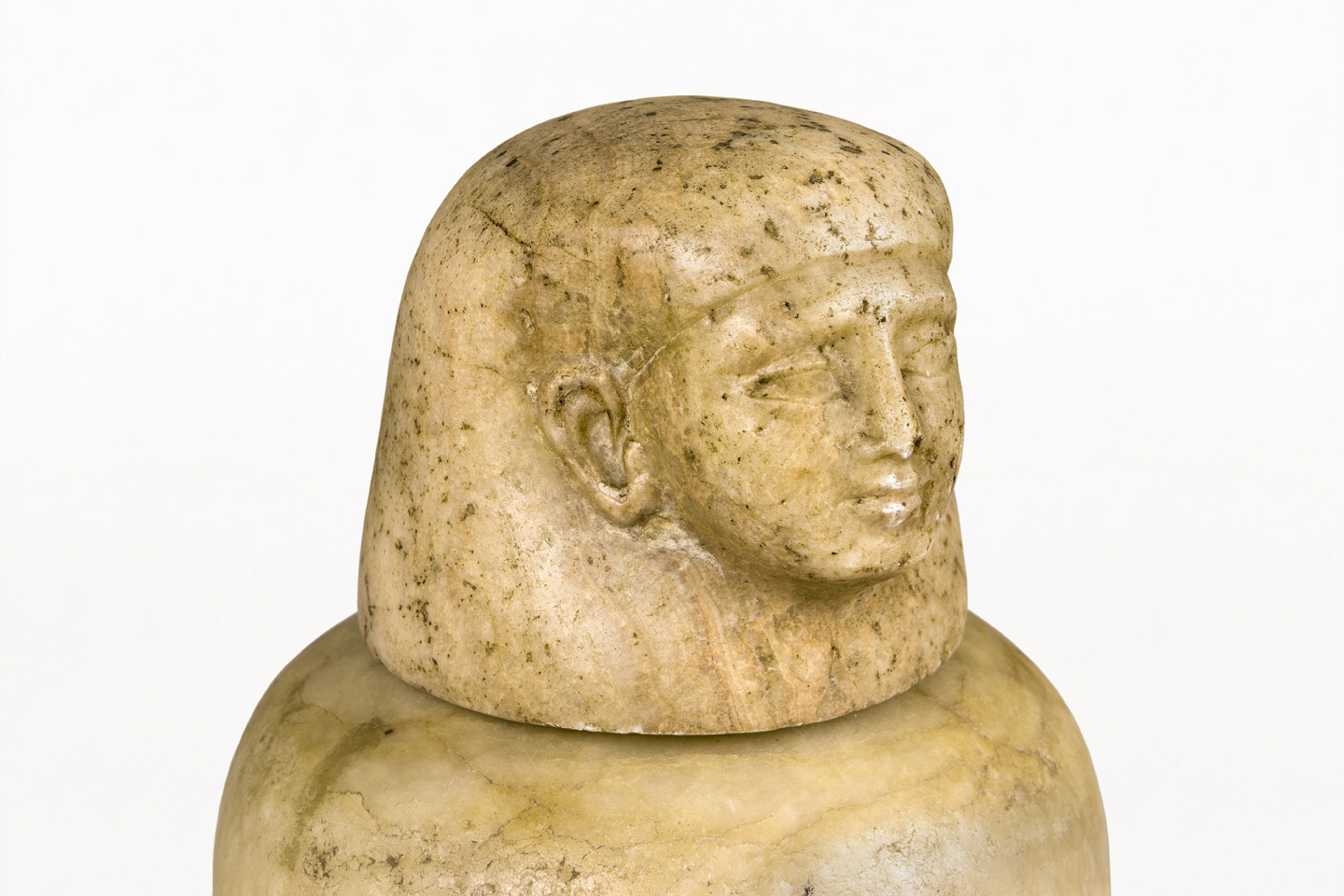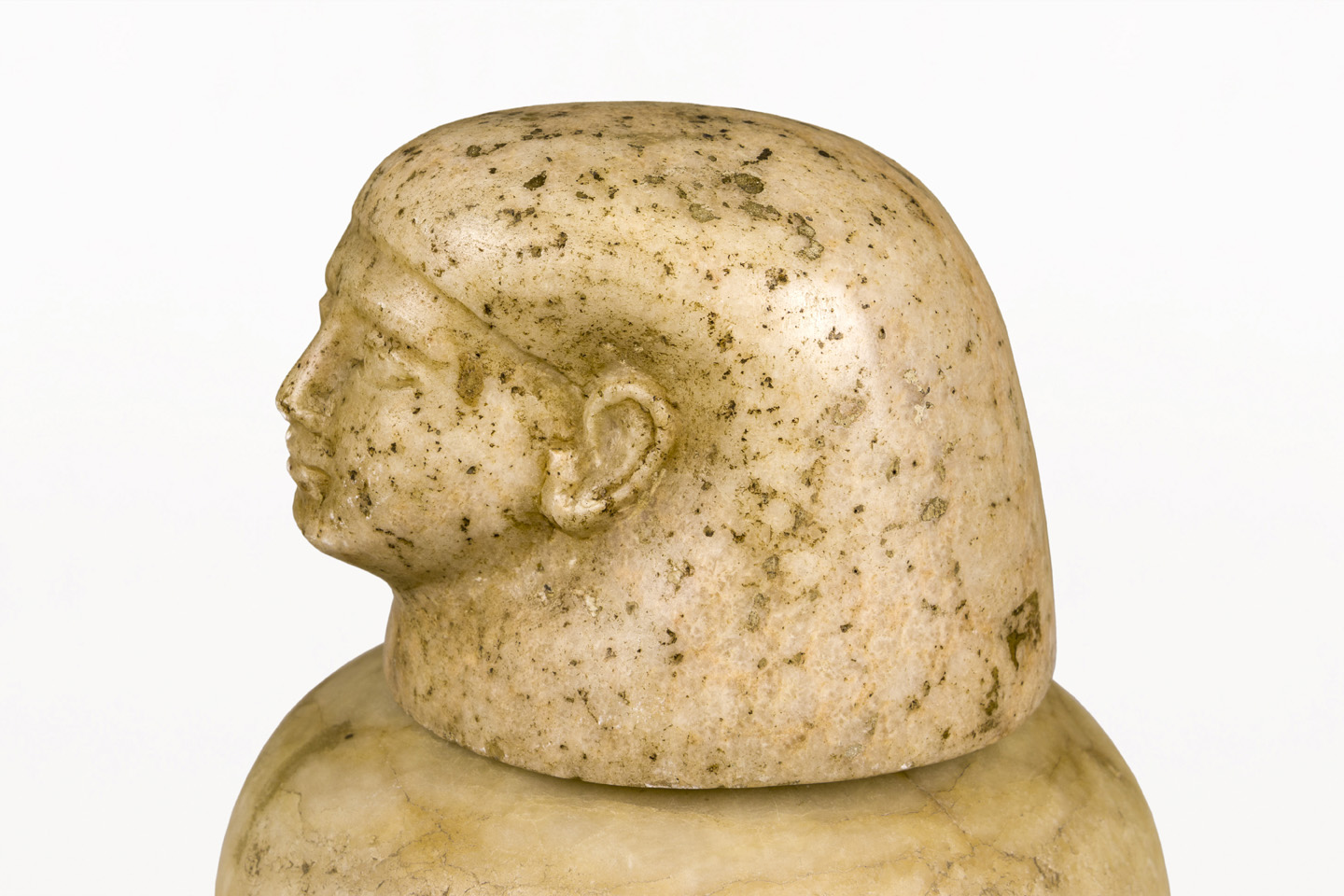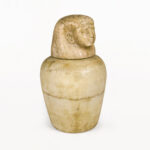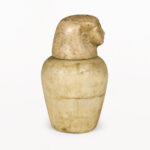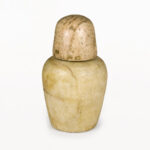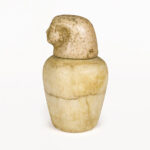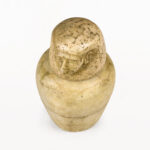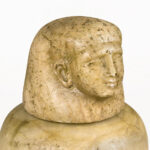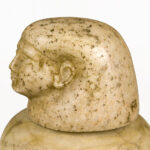Canopus Jar “Asmet”, 1069 – 664 B.C, Egypt (SC0116)
Canopus Jar “Asmet”, With certificate of authenticity. 1069 – 664 B.C, Egypt. Good condition. Egyptian culture are “Canopus jars”. These were vessels that the ancient Egyptians used during the mummification process to store organs. boarders of the deceased. The name “Canopus” probably comes from the Greek port city of Canope, which was known to the Egyptian world for its importance in trade and religion. During the period between 1069 and 664 B.C. In ancient Egypt, there were several distinct art movements. One of the most notable was the Amarna style of art, which emerged during the reign of Pharaoh Akhenaten in the 14th century BC. This style was highly distinctive, featuring features such as slender bodies, long faces, and graceful curves. It was also characterized by its innovative use of color and its focus on emotional expression rather than realism. Other important artistic styles that thrived in Egypt at this time include the Saite, Persian, and Ptolemaic styles, each with their own unique characteristics.
DIMENSIONS
Height: 12.99 in (33 cm) Diameter: 7.48 in (19 cm)

